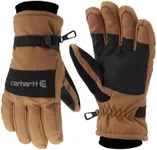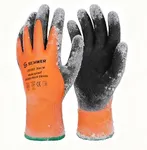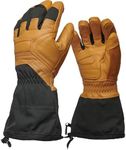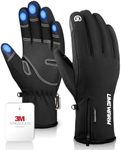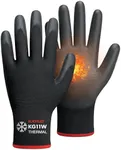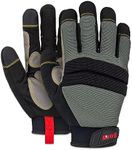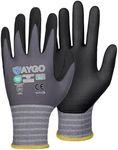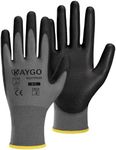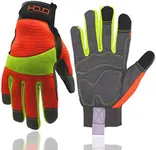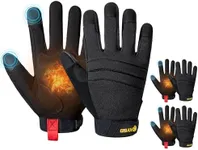Buying Guide for the Best Gloves For Shoveling Snow
When it comes to shoveling snow, having the right pair of gloves can make a significant difference in comfort, warmth, and efficiency. The right gloves will keep your hands warm and dry, provide a good grip on the shovel, and allow for flexibility and dexterity. Here are some key specifications to consider when choosing gloves for shoveling snow, along with explanations to help you make the best choice for your needs.MaterialThe material of the gloves is crucial for warmth, durability, and water resistance. Common materials include leather, synthetic fabrics, and insulated materials. Leather is durable and provides a good grip but may not be as waterproof. Synthetic fabrics like nylon or polyester are often waterproof and can be insulated for extra warmth. Insulated materials, such as Thinsulate, provide excellent warmth. Choose a material based on your need for warmth, water resistance, and durability.
InsulationInsulation is what keeps your hands warm in cold conditions. It can be made from various materials like fleece, down, or synthetic fibers. Light insulation is suitable for milder conditions or if you tend to get warm easily. Medium insulation is a good all-around choice for most winter conditions. Heavy insulation is best for extremely cold temperatures. Consider the typical weather conditions in your area and how cold your hands get when choosing the level of insulation.
WaterproofingWaterproofing is essential to keep your hands dry while shoveling snow. Gloves can be waterproofed through materials like Gore-Tex or with a waterproof membrane. Some gloves also have a water-resistant coating. Fully waterproof gloves are ideal for wet, heavy snow or if you will be shoveling for extended periods. Water-resistant gloves may suffice for lighter, drier snow or shorter durations. Think about how wet the snow typically is in your area and how long you will be outside.
GripA good grip is important to hold the shovel securely and prevent slipping. Gloves with textured palms or rubberized grips provide better traction. Leather gloves naturally offer a good grip, while synthetic gloves may have added grip features. If you need to handle the shovel and other tools frequently, look for gloves with enhanced grip features. Consider how much grip you need based on the type of shovel you use and the amount of snow you typically handle.
DexterityDexterity refers to how easily you can move your fingers and perform tasks while wearing the gloves. Thicker, heavily insulated gloves may reduce dexterity, while thinner gloves offer more flexibility. If you need to perform tasks that require fine motor skills, such as adjusting the shovel or handling small objects, look for gloves that balance warmth with dexterity. Consider how much finger movement you need while shoveling and choose gloves that allow for sufficient flexibility.
Cuff StyleThe cuff style of the gloves affects how well they keep out snow and cold air. Gauntlet-style cuffs extend over the wrist and can be tightened to keep out snow, making them ideal for deep snow or windy conditions. Shorter cuffs are easier to put on and take off and may be more comfortable for less extreme conditions. Think about how deep the snow typically is and how much protection you need around your wrists when choosing the cuff style.
FitThe fit of the gloves is important for comfort and effectiveness. Gloves that are too tight can restrict circulation and reduce warmth, while gloves that are too loose can make it difficult to grip the shovel and allow cold air to enter. Look for gloves that fit snugly but comfortably, with enough room to move your fingers. Consider trying on different sizes and styles to find the best fit for your hands.
